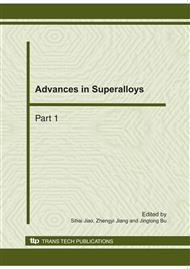p.1163
p.1170
p.1174
p.1178
p.1186
p.1194
p.1198
p.1202
p.1206
A Study on Heat Treatment Effect and Mechanism of High-Pressure Vessel in the Wall Thickness Direction
Abstract:
To understand the effects and mechanism of heat treatment to the high-pressure vessel performance, a series of different closed-shaped cavity heat treatment tests were conducted. Through tensile test, impact test, hardness test, OM and SEM test and so on, the heat treatment effects and micro mechanism of high-pressure vessel with different closed-shaped cavity were studied along the wall thickness direction. The results indicate that: with increase of volume of the closed-shaped cavity, the strength of container middle cross-section increases in the beginning and decreases afterward, the toughness falls first and then rises, and the plasticity changes little. The strength, plasticity and hardness increase gradually from inside to outside along the wall thickness direction. The hardness increases a little in the beginning, but then rises quickly when it comes close to the outer wall. After being quenched at 930°C and tempered at 580°C, the microstructure of the vessel material is mainly tempered sorbite. The structure grain boundary becomes more and more blur from inside to outside of the wall. Inner wall contains a small amount of residual austenite and tempered martensite. The fracture surface is toughness one.
Info:
Periodical:
Pages:
1186-1193
Citation:
Online since:
October 2010
Authors:
Price:
Сopyright:
© 2011 Trans Tech Publications Ltd. All Rights Reserved
Share:
Citation:


